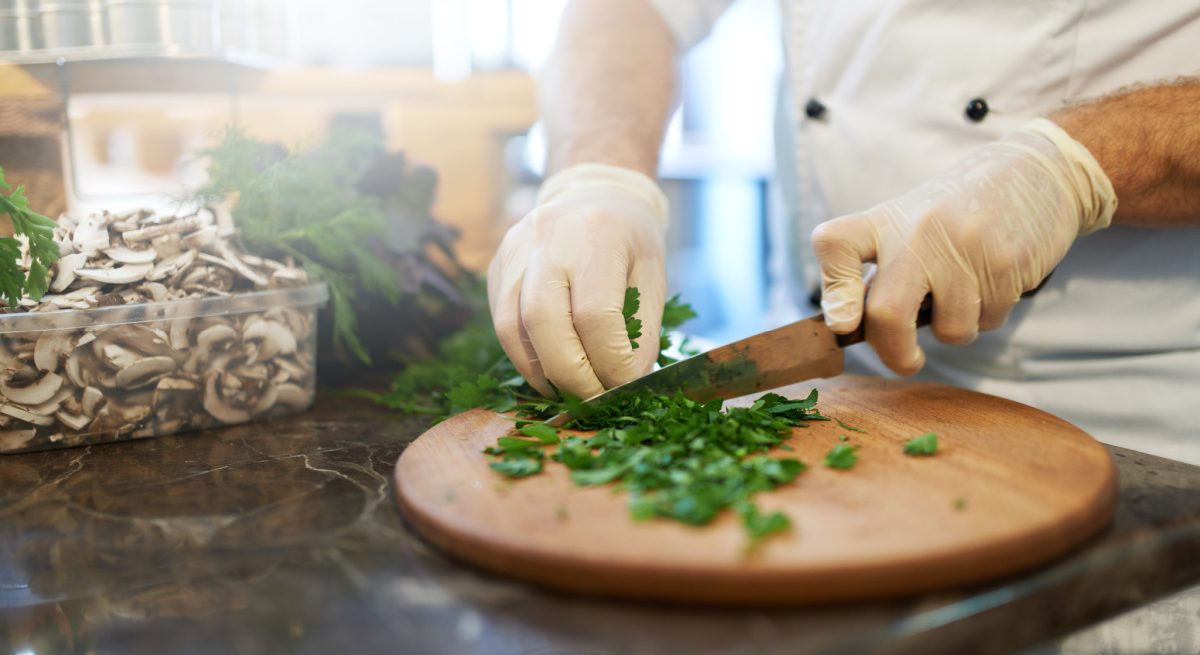Stop Prepping Veggies – Strategy in Post-Pandemic Recovery
3 Min Read By Amber Parrow
When helping restaurants optimize their produce programs, the biggest and best thing we can tell them is to stop chopping, scooping, and prepping their veggies! Fresh prepared produce delivers many benefits to foodservice operations from cost and labor savings along with increasing back of house efficiency, food safety, and freshness. With everything that has happened with the pandemic and the new ways restaurants are operating, not prepping your produce is incredibly relevant to foodservice’s post-pandemic plan of action.
Fresh Prep Basics
If you aren’t familiar with fresh cut and fresh prepped produce, let me introduce you to a simple concept that has radicalized our industry and the restaurants that employ it. There are a variety of produce items that can be purchased already prepared like lettuce-based items, coleslaw, and guacamole. By keeping the prep work out of the kitchen, restaurants can bring stability and efficiency to the product yield (you only buy 100 percent usable produce) and price (no more fluctuations with the commodity market). Other benefits include greater product consistency, which is especially important for operators, and less wasting from chopping, scooping, and prepping fresh produce.
Supply Chain Shortages
One of the biggest pain points during and after the pandemic was supply chain. The initial onset of the pandemic hit quicker than an established supply chain could adjust and we are still feeling the ripples of the shutdowns a year later. On the produce side of things, supply drastically shifted away from foodservice to retail. As restaurants are now bouncing back strongly, the supply chain is adjusting. However, in our world there are a few impactful strategies, like converting to a fresh cut program, that can lessen, although not entirely remove, supply constraints.
Ease Labor Shortages
We have been talking about rising labor rates for a few years now, but what we didn’t expect was the massive labor tightening from the pandemic. For various reasons, workers have opted to stay at home, something that is happening through multiple industries with entry level jobs. This was painfully evident when a couple of my coworkers and myself went to eat at a fast casual chain and waited over a half hour for food. They were turning away customers because there were only two of them on staff running the register and prepping food.
One of the ways we have seen our foodservice buyers navigate the labor shortage is simplification of the menu, or the continuance of a simpler menu from pandemic cutbacks. Another strategy is to convert a whole produce program to fresh cut. For years we have seen increased consistency and food safety by simply purchasing prepared produce. Instead of having dedicated staff prepping vegetables or even asking team members to double up on tasks, this reduces prep time and ensures the consistency of product output throughout locations.
Post-Pandemic Consumer Behavior
The pandemic shutdowns caused consumers to return to their kitchens pushing up retail food markets and lowering foodservice ones. We also noticed some interesting phases of food preferences from consumers such as comfort foods at the beginning of the pandemic and then a focus on nutrition as we became more and more focused on health and wellness. The post-pandemic shift we’re seeing is consumers returning to their interest in new and exotic flavors. Naturally produce is the food of wellness, and can bring the nutrition and excitement restaurants can entice patrons with as business begins to shift closer to the pre-covid balance of retail and foodservice buy.
Ghost Kitchen Roll Out
An idea on the minds of foodservice leadership post-pandemic is the ghost kitchen – a kitchen dedicated to prepping food without maintaining a dining space. During the pandemic many existing fast casual concepts shut down their dining rooms and in essence became ghost kitchens where customers could order for delivery or pick up.
Ghost kitchens are certainly an interesting concept to explore with increased demand for delivery and carry-out options and probably is a great extension to restaurants with multiple locations with established operations and purchasing infrastructure. Fresh prepared produce fits beautifully into the ghost kitchen model as it brings more consistency of product, supply, output, and reduces the prep time and labor in the kitchen. Time will tell how much consumer habits will re-adjust as businesses is opening back up.
The Key Is Stability and Consistency
When circumstances move out of their norms, we have to look beyond our norms to find solutions to solve the problems that arise. We’ve seen so many innovations and creative ideas come out of the pandemic. In the end, we may not completely return to our pre-covid normal, but we can and will walk away from the past year even better. A small change like converting to a prepared produce program can introduce stability and consistency into a volatile market that will not only help level out the ups-and downs for your business but trickle out into the larger market and creating a better, post-pandemic normalcy.


